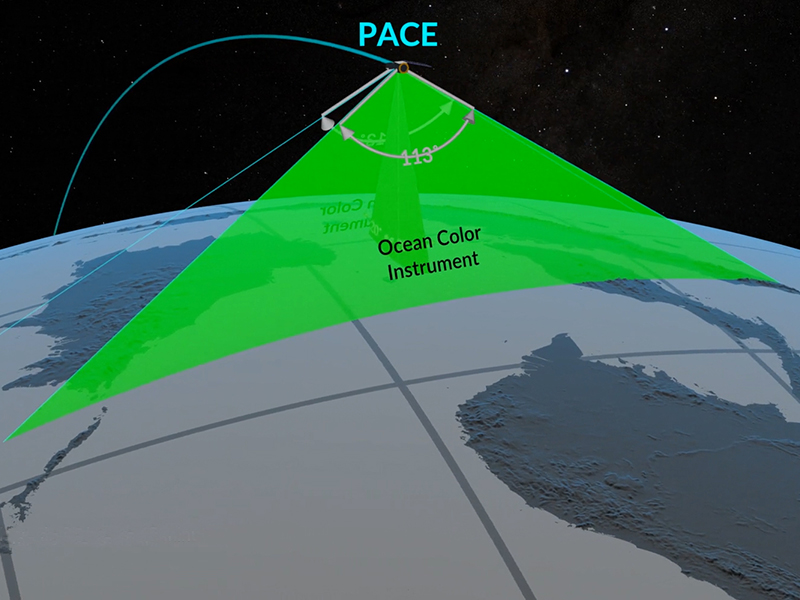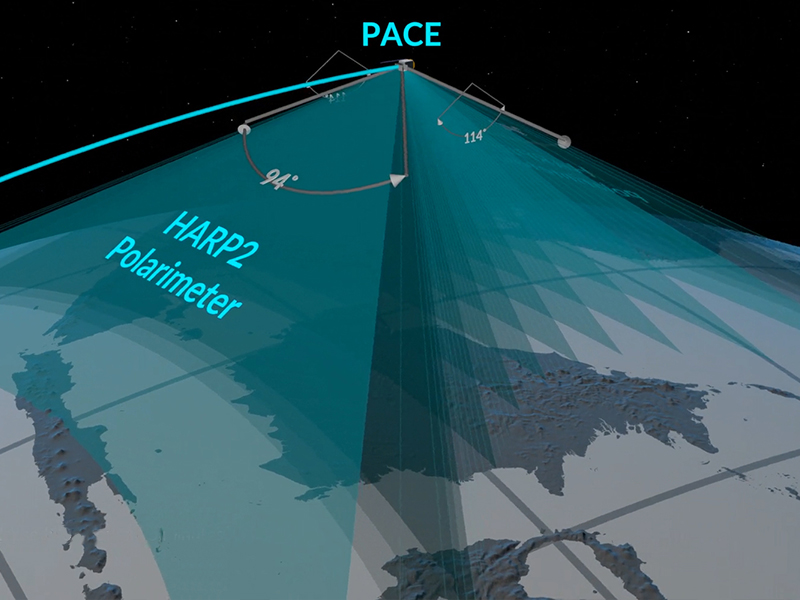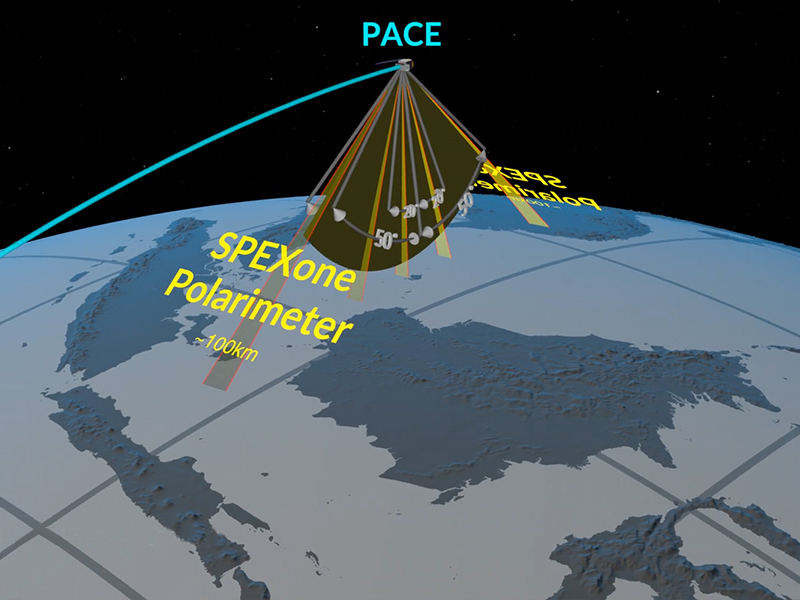Blog
PACE weekly commissioning update
Posted on Thursday, February 29, 2024 at 16:00:00Launch through 29 February 2024
Summary of the week's events
Spacecraft commissioning activities completed last Thursday, which paved the way for instrument commissioning to begin in earnest on February 22. Thursday saw OCI's rotating telescope assembly (RTA) launch lock released, followed by spin up of the RTA. On Friday morning, the Science Data Segment (SDS) reported acquisition of HARP2 engineering data. Later that day, HARP2 calibrations and science data collection began. Not to be outdone, SPEXone also completed several of its activation phases on Friday, including functional and nominal science checkouts. On Saturday, while our two small-but-mighty polarimeters captured data, the OCI team powered on its focal plane assemblies (FPAs) and loop heat pipes (LHPs). Late Saturday night, OCI captured its first two orbits of science data during a serendipitous test. Late Tuesday, after tilt checkouts completed, OCI started capturing routine science data. Today (Thursday), OCI executed its first lunar calibration maneuver.
The game is ON!
Looking forward through Commissioning
The PACE Project has planned 60 days of in-orbit checkout. Over the course of the coming weeks, the instrument teams will engage in a series of special tests, characterizations, and calibrations. While data will be collected during this period, their purpose is to evaluate instrument performance and, thus, will not be distributed at this time.
But don't fret. Science data will start flowing publicly no later than the end of the commissioning period. Our hope is to have science first light released roughly one month from now. We will of course, make sure you know exactly when.
In the meantime, to ready yourself for the forthcoming flow of data, see: https://pace.oceansciences.org/work_with_pace_data.htm.
Other information
This update is being sent to a series of mailing lists, while also being posted online:
https://pace.oceansciences.org/blog.htm
In early March (TBD), we'll only send this update to a single email list. If you'd like to continue to receive email updates, become a member of our Community of Practice. Sign up here:




